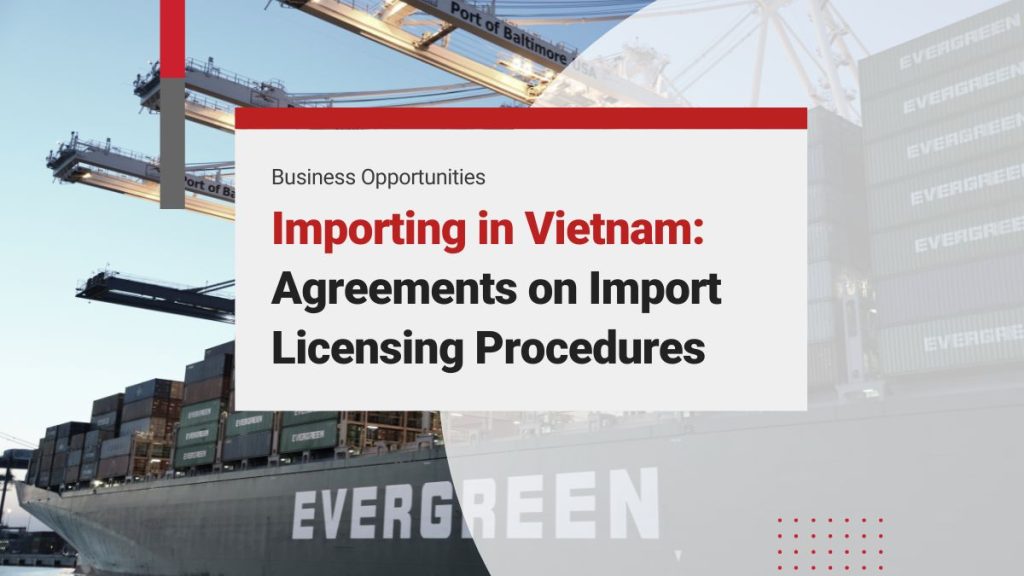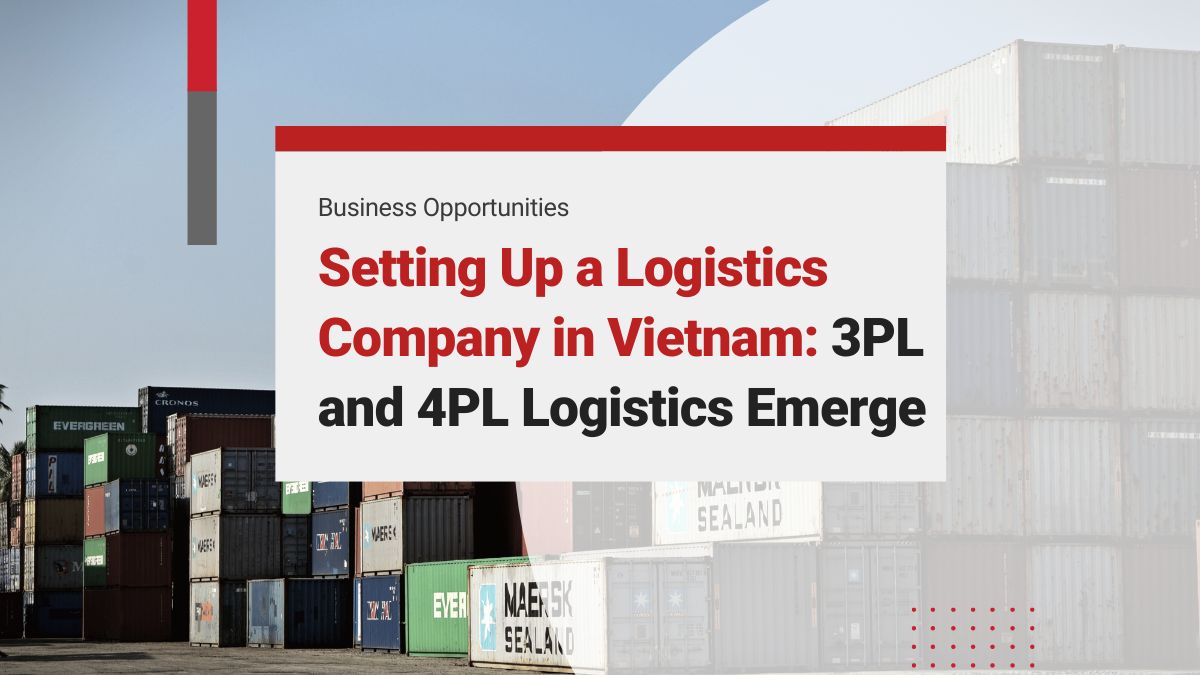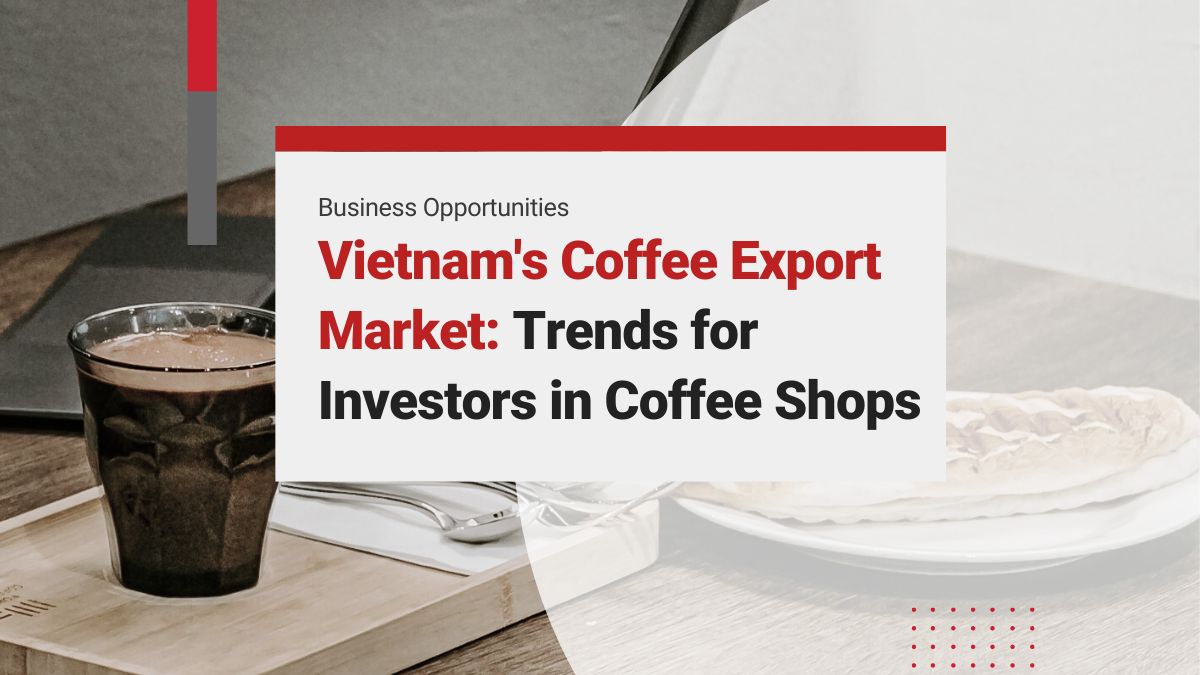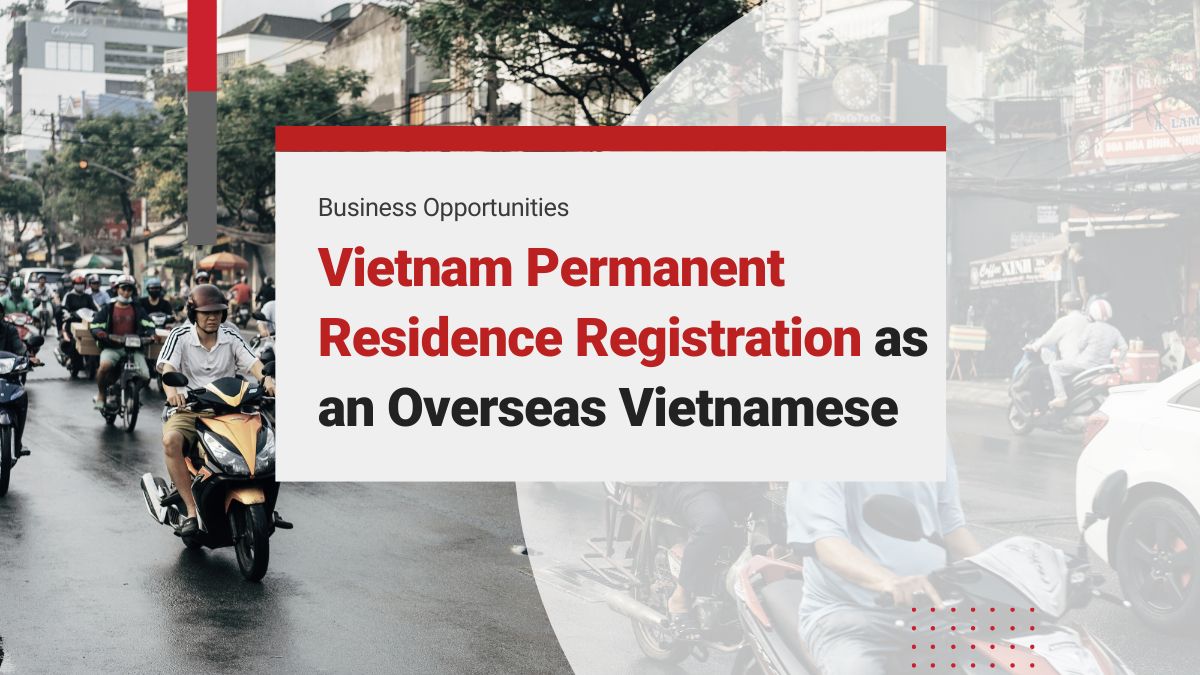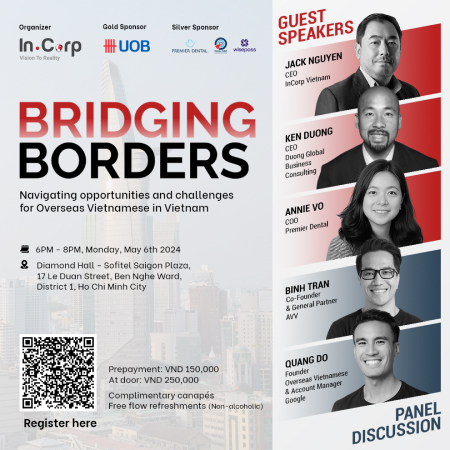Vietnam offers an enticing market for foreign businesses, with a population exceeding 99.2 million. Projections indicate that this country will substantially increase an additional 36 million middle-class citizens by 2030. So, it is crucial to understand the emerging trends, particularly the rapid expansion of the middle class, if you are considering importing goods into this country.
Vietnamese consumers strongly prefer imported goods, often perceiving them as higher quality and product safety. These imported items span various categories, including healthcare products, food, beverages, and children’s toys. This article explores the compelling reasons for importing in Vietnam, motivations for investing, guidelines, taxes, and what you can import here.
Interested in importing to Vietnam? Explore InCorp Vietnam’s Legal Advisory Services for expert guidance and advice!
Situation of Importing in Vietnam
Vietnam’s import value surged to a peak of US$32.66 billion in March 2022. By August 2022, imports soared to US$30.96 billion, which marked a substantial 13% rise compared to August 2021. This underscored the significant reliance of many industries on imported goods. However, navigating the country’s import laws, including obtaining the necessary import license, is crucial for investors looking to capitalize on this burgeoning market.
In August 2023, the country witnessed a notable surge in import and export turnover, soaring by 8.8% to US$62.08 billion compared to July 2023. Export figures spiked by 9% to US$32.76 billion, while imports surged by 8.6% to US$29.32 billion.
Despite this positive trend, Vietnam’s total imports by the end of August 2023 witnessed a 15.9% decline compared to 2022, amounting to US$208.27 billion. The reduction was particularly pronounced in groups such as phones and components, machinery, equipment, tools, spare parts, computers, electronic products, components, and raw plastic materials. These groups collectively contributed to a substantial portion, about 44%, of the overall decrease in the country’s export-import value.
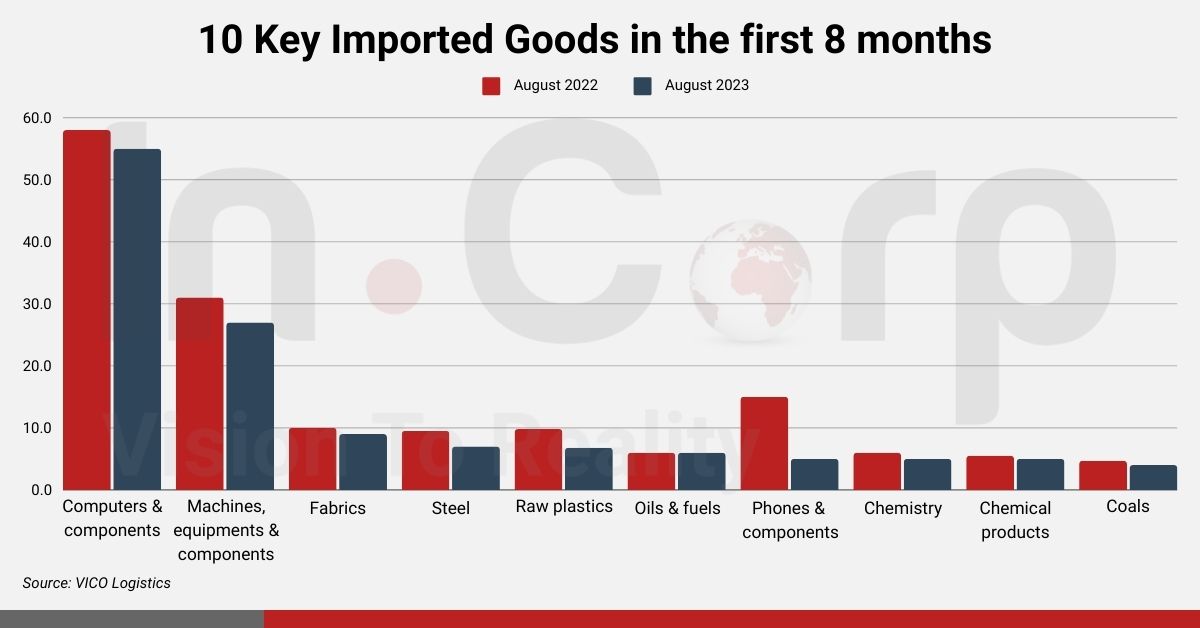
In March 2024, Vietnam’s imports rose to US$31.08 billion from US$23.30 billion in February 2024. Throughout the period from 1990 to 2024, the country’s average imports were US$10.52 billion, with a peak of US$32.66 billion in March 2022 and a record low of US$0.74 billion in February 1999.
Vietnam’s primary import products are computers, electrical products, and parts, accounting for 18% of the total imports. This is followed closely by machinery, instruments, and accessories, which account for 16% of total imports. Additional significant imports include telephones, mobile phones, and their components (8%), textile fabrics (5%), and iron and steel (4%).
China stands out as the leading import partner, contributing 28% to the total imports, while South Korea follows closely behind at 22%. Other notable import partners include Japan (8%), Taiwan (6%), Thailand (5%), and the United States (4%).
Reasons to Invest in Importing in Vietnam
Vietnam stands out as one of the rapidly advancing economies in Asia, presenting importers with abundant business prospects. With a burgeoning young population and technology-inclined consumers, the nation represents the swiftest-expanding middle-class demographic in the area. Here are the primary reasons why importing to Vietnam is advantageous:
Free Trade Agreements with Other Countries
Over the past 30 years, Vietnam has embraced foreign direct investment (FDI) to align with the global market and economy. As a member of the World Trade Organization (WTO) and a participant in numerous free trade agreements with various nations, it has actively engaged in international partnerships.
Furthermore, the country’s inclusion in the Trans-Pacific Partnership (TPP) enhances its appeal and potential for transformation. Vietnam has promised to improve its state-owned businesses, allow workers to join groups freely, and follow tougher rules to protect the environment. By doing this, it is set to gain big advantages from being part of the TPP, a group of 12 nations working together.
Vietnam’s integration into the global economy is marked by its membership in various international trade organizations and agreements.
- Joining the World Trade Organization (WTO) in 2007, Vietnam pledged adherence to its agreements, including those concerning Customs Valuation, Technical Barriers to Trade (TBT), and Sanitary and Phytosanitary Measures (SPS).
- The Bilateral Trade Agreement (BTA) with the United States further solidified its commitment to international trade.
- As a member of the Association of Southeast Asian Nations (ASEAN) and the ASEAN Free Trade Area (AFTA), Vietnam collaborates with regional partners to enhance its trade competitiveness. It has also engaged in trade agreements with countries such as China, Japan, Australia, New Zealand, and Chile, extending its reach beyond ASEAN.
- The Comprehensive and Progressive Agreement for Trans-Pacific Partnership (CPTPP) and the Regional Comprehensive Economic Partnership (RCEP) underscore Vietnam’s dedication to fostering economic cooperation on both regional and global scales.
Read More: Guide to Vietnam’s 16 Active Free Trade Agreements
Thriving Middle-Class
Vietnam is experiencing a rapid expansion of its middle-class community. Projections suggest that the country’s middle class has surged to 56 million individuals, a significant leap from the 8 million recorded in 2012. Cities, especially Ho Chi Minh City (HCMC), have a lot of people who feel good about spending money. In HCMC, 90% of the people are considered middle class, which is a big deal. Because of this, Vietnam has one of the fastest-growing middle-class groups globally.
This burgeoning middle class drives over 50% of the nation’s total consumption. The country’s ascent to the 9th position in the Global Retail Development Index is a testament to this trend. The presence of branded and luxury stores in HCMC underscores the city’s robust purchasing power, attracting foreign brands to establish their presence in this thriving market.
Read Related: 9 Reasons to Choose Ho Chi Minh City in Vietnam to Launch Your Business
Robust economic expansion and increasing employment prospects have fostered the rapid expansion of Vietnam’s middle class. The country’s middle-class community presently comprises 13% of the population, equivalent to 97 million individuals, and it is projected to be doubled by 2026. Concurrently, the per capita income is expected to soar to US$7,500 by 2030, which indicates sustained economic growth.
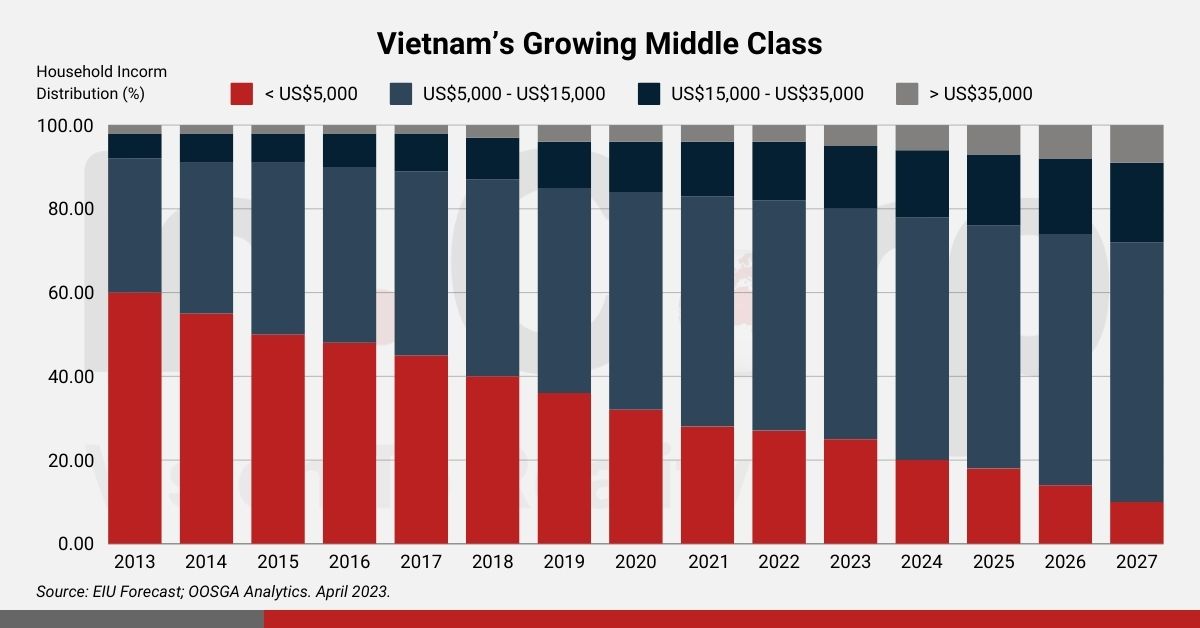
Importing to Vietnam: What to Import
In Vietnam, a significant portion of consumer spending is allocated to imported goods. These include electronic circuits, micro-assemblies, phone systems, and electronic devices such as smartphones, electrical components, refined petroleum oils, lobsters, and other crustacean seafood.
The list below outlines the top 5 imported products by dollar amount, along with the corresponding percentage of the total import value, as of 2019:
- Electrical equipment and machinery: US$96 billion (34.3%)
- Machinery and high-tech devices, including computers: US$26.9 billion (9.6%)
- Plastics, including plastic articles: US$15.2 billion (5.4%)
- Mineral fuels, including oil: US$10 billion (3.6%)
- Iron and steel: US$9.8 billion (3.5%)
Importing to Vietnam: Understanding Restricted Goods
In compliance with Decree No. 187/2013/ND-CP, Vietnam maintains a strict policy regarding importing certain goods for commercial or non-commercial purposes. The list of prohibited items includes the following categories:
- Weapons, explosives, military equipment, and ammunition are strictly forbidden.
- Publications that are banned from circulation and distribution in Vietnam are not allowed to be imported.
- Various items, such as sky lanterns, assorted firecrackers, and equipment that disrupts road speed measuring instruments, are prohibited.
- Second-hand goods, including automotive and electronic items, are prohibited from importation.
- Tobacco products, cigars, and petroleum oils fall under the restricted category.
- Radio equipment and devices emitting radio waves must comply with the Law on Radio Frequencies to be eligible for import.
- Postal stamps that are prohibited from display, exchange, and propagation cannot be imported.
- Cultural products banned from distribution and circulation in Vietnam cannot be imported.
- Waste, scrap, and refrigerating equipment containing C.F.C (chlorofluorocarbon) are prohibited.
- Chemicals listed in Appendix III of the Rotterdam Convention and plant protection agents banned from use in Vietnam cannot be imported.
- Raw materials and products containing amphibole asbestos are also prohibited from importation.
Circular No. 12/2018/TT-BCT issued by the Ministry of Industry and Trade provides a detailed list of used consumer goods, medical devices, and vehicles that are prohibited from import, along with their corresponding HS codes.
Additionally, Circular No. 34/2013/TT-BCT outlines specific goods not allowed to be imported for foreign-invested enterprises. This comprehensive regulatory framework ensures strict control over importing to Vietnam and helps to maintain compliance with national laws and international agreements.
Guidelines for Importing to Vietnam
For companies looking to import products into Vietnam, there are several essential steps and considerations to ensure compliance with legal requirements. Below is a comprehensive guidelines for the process and procedures to be followed:
Setting up a Trading Company in Vietnam
Establishing a trading company is a common route for individuals intending to import goods. This process typically takes 1-3 months and involves gathering and submitting mandatory documents, including a business registration certificate, investment license, and import license.
Adherence to financial regulations is mandatory, but there is no minimum capital requirement for setting up a trading company in Vietnam. Product registration for approval by relevant authorities is also often necessary before importing items into this country.
Read Related: Setting Up a Logistics Company in Vietnam: 3PL and 4PL Logistics Emerge as Trends
Engaging an Importer of Record in Vietnam
Alternatively, companies can opt for the importer of record service. This option involves outsourcing import-related tasks to a local company in Vietnam, which handles regulatory paperwork and bureaucracy on behalf of the importer.
Engaging an importer of record service can streamline the import process, reduce costs and taxes, and eliminate the need to obtain an import license. It offers an ideal solution for companies looking to test the market before committing to full-scale operations in Vietnam.
Read More: Importing to Vietnam without Local Presence: Utilizing an Importer of Record (IOR)
Authorised Importers
Vietnamese traders have specific privileges regarding import and export activities. These include exporting goods of all kinds and importing goods aligned with their registered business lines. Foreign-invested enterprises must comply with investment license provisions and relevant legal requirements when importing goods. Obtaining permits for importing or exporting regulated goods is essential, and competent agencies conduct compliance checks before customs clearance.
Import Licensing System
Vietnam operates an automatic import licensing system overseen by the Ministry of Industry and Trade (MOIT). Importers of various goods categories must obtain a license from MOIT to facilitate customs clearance. This system ensures compliance with the country’s WTO commitments and allows foreign-invested enterprises to engage in direct import and export activities. Distribution rights are open to joint venture investments and wholly foreign-invested enterprises.
Special Import/Export Requirements and Certifications
Seven ministries and agencies oversee minimum quality/performance standards for various goods categories, ensuring health, safety, and cultural requirements. Importing of goods must meet these standards to be approved for entry into Vietnam.
Process and Procedures for Importing Goods into Vietnam
The import process involves several key steps. It includes the following:
- Import Preparation
- Classification of Goods
- Determination of Origin
- Identification of Import Taxes
- Completion of Customs Clearance Procedures
Businesses must accurately classify goods according to HS codes to determine applicable customs duties. Importers are also responsible for understanding and paying various import taxes, including import duty, VAT, special consumption tax, and environmental protection tax. Completing a customs declaration and paying taxes are essential for clearing goods through customs.
Additional Taxes and Charges Incurred During the Import Process
When bringing goods into Vietnam, businesses are required to cover fundamental taxes and charges, which include:
- Import Duty: This constitutes the tax levied by the state on goods imported into Vietnam. The import duty rate is determined as a percentage (%) of the taxable value of the goods.
- Value-Added Tax (VAT): This refers to the tax payable by businesses to the state upon consuming goods and services within the country’s borders. The VAT rate is computed as a percentage (%) of the selling price of goods and services.
- Special Consumption Tax: This is the tax that businesses must remit to the state upon producing or importing goods possessing luxury attributes about health, environment, and social security.
- Other Taxes and Fees: These include fees for utilizing technical infrastructure, quality inspection fees, quarantine fees, environmental protection taxes, anti-dumping duties, anti-subsidy duties, safeguard duties, etc.
About Us
InCorp Vietnam is a leading market entry and corporate services firm in Vietnam. We are part of InCorp Group, a regional leader in corporate solutions that encompasses 8 countries in Asia-Pacific, headquartered in Singapore. With over 1,200 legal experts serving over 15,000 Corporate Clients across the region, our expertise speaks for itself. We provide transparent legal consulting, setup, and advice based on local requirements to make your business fit into the market perfectly with healthy growth.
Don’t take our word for it. Read some reviews from some of our clients.
